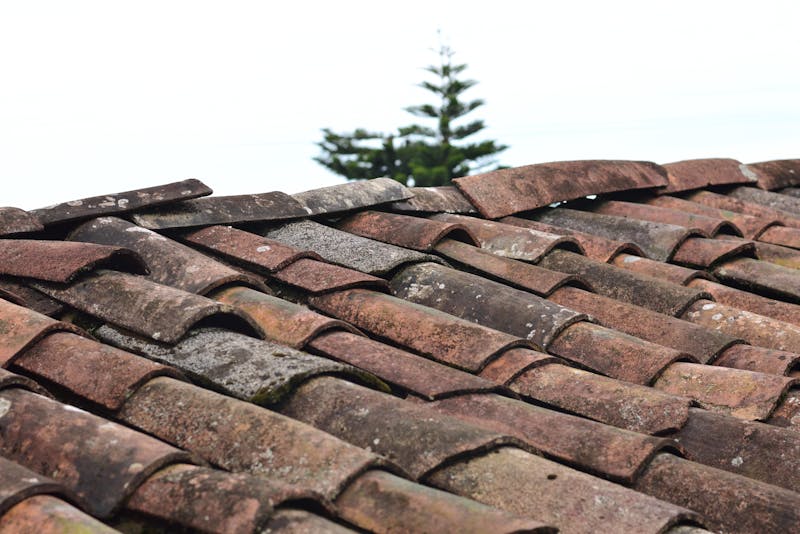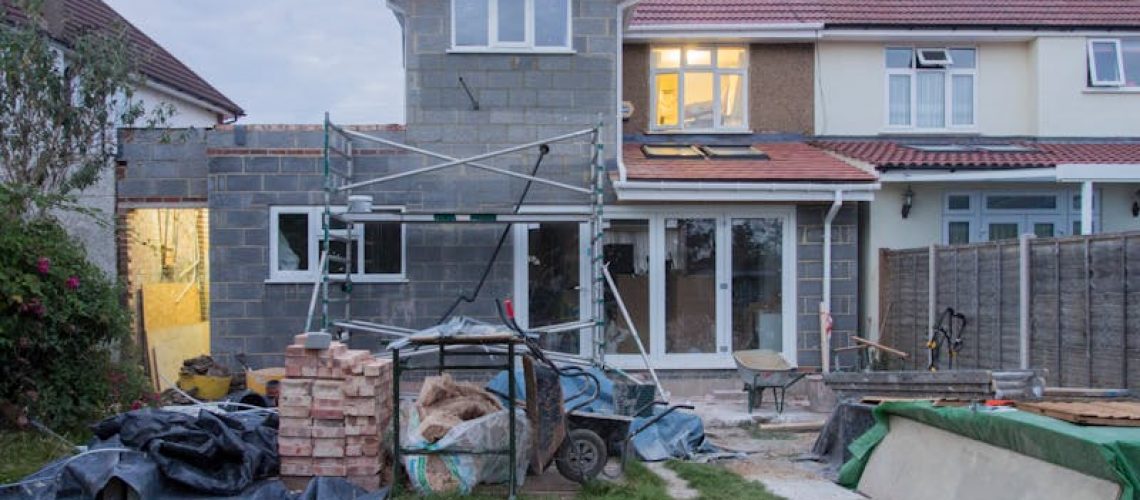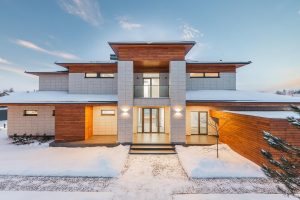- Peeling paint, cracked siding, and damaged roofing are early warning signs that your home’s exterior needs attention.
- Outdated designs and fading finishes can hurt curb appeal and lower your property’s market value.
- Poor insulation, drafty windows, and rising energy bills indicate it’s time to upgrade exterior materials for better efficiency.
- Crumbling driveways, damaged gutters, and visible foundation cracks can lead to costly structural issues if ignored.
- Regular inspections and timely remodeling protect your home’s structure, comfort, and long-term value.
- Investing in a professional exterior home remodel enhances aesthetics, safety, and resale potential.
Your home’s exterior is more than just a façade—it’s a reflection of your lifestyle, taste, and attention to maintenance. Over time, even the sturdiest materials succumb to the effects of weather, age, and environmental wear. Cracked paint, outdated fixtures, or warped siding not only diminish your home’s curb appeal but can also impact structural integrity and energy efficiency.
Knowing when it’s time for an exterior home remodel can help you prevent costly repairs and boost your home’s value. In this comprehensive guide, we’ll explore the 10 key signs that indicate it’s time to give your home’s exterior a much-needed refresh, along with practical tips for homeowners ready to take the next step.
1. Peeling Paint and Faded Finishes: The First Warning Signs
One of the most obvious signs that your home needs remodeling is faded or peeling paint. Exterior paint doesn’t just serve an aesthetic purpose—it also protects surfaces like wood, stucco, and brick from moisture and UV damage.
Over time, exposure to sunlight and fluctuating temperatures causes paint to crack, chip, and fade. This allows water to seep in, leading to mold growth, wood rot, or even structural deterioration. If your home hasn’t been painted in over a decade, it’s likely time for an update.
What to look for:
- Peeling, bubbling, or chalky paint texture
- Discoloration or uneven fading on sun-exposed walls
- Visible water stains or mildew along trim and siding
Remodeling tip:
Choose weather-resistant, low-VOC exterior paint and consider pairing your paint project with siding repairs or trim replacement for a cohesive look.
2. Cracked or Damaged Siding: A Threat to Home Integrity
Your siding is one of the most critical components of your home’s exterior, acting as a barrier against wind, rain, and pests. Cracks, warping, or rotting panels are not just cosmetic issues—they signal potential water intrusion that could compromise your home’s structural frame.
If you notice panels that appear loose or uneven, or if there’s visible mold or mildew growing beneath them, your siding may have reached the end of its lifespan.
Signs your siding needs replacement:
- Noticeable cracks or bulges
- Fungus or mold along seams
- High energy bills (indicating poor insulation)
- Siding that’s 15–20 years old or more
Remodeling tip:
Consider fiber cement, engineered wood, or vinyl siding for durability and energy efficiency. These modern materials resist moisture, pests, and UV damage better than traditional options.
3. Roofing Wear and Tear: When Is It Time to Replace Your Roof?

Your roof is your home’s first line of defense against the elements. However, even the most durable shingles have a lifespan. Curling, missing, or cracked shingles are early indicators that your roof may no longer provide proper protection.
Roofs older than 20 years typically show signs of deterioration that can lead to leaks and insulation issues. Additionally, dark streaks caused by algae growth can detract from your home’s appearance.
Watch for these signs:
- Granules collecting in gutters
- Sagging rooflines or water stains in the attic
- Noticeable daylight through the roof boards
- Moss or algae buildup
Remodeling tip:
An exterior home remodel that includes roof replacement not only enhances safety but also increases property value. Consider modern asphalt shingles, metal roofing, or composite options designed to withstand diverse U.S. climates.
4. Inefficient or Drafty Windows: The Hidden Energy Drain
Old or poorly sealed windows can significantly affect your home’s comfort and energy efficiency. Drafts, condensation between glass panes, or difficulty opening and closing windows are all red flags.
Single-pane windows, common in older homes, offer minimal insulation compared to today’s double or triple-pane alternatives. Replacing them not only reduces energy costs but also improves soundproofing and security.
Indicators it’s time to replace your windows:
- Noticeable drafts or temperature fluctuations
- Condensation buildup between panes
- Faded furnishings due to UV exposure
- Increased energy bills during seasonal shifts
Remodeling tip:
Opt for ENERGY STAR-certified windows with Low-E coatings and insulated frames. Coordinate the style with your exterior siding and trim for a unified, modern appearance.
5. Crumbling Driveway or Walkway: Safety and Curb Appeal Concerns
Cracked or uneven driveways and walkways don’t just look unattractive—they can pose tripping hazards and signal foundational issues. Temperature fluctuations, water seepage, and heavy vehicle loads all contribute to concrete and asphalt deterioration over time.
Key warning signs:
- Visible cracks or potholes
- Water pooling after rain
- Shifting or sinking sections
- Faded or stained surface appearance
Remodeling tip:
Upgrading your driveway and walkways during an exterior home remodel can greatly enhance curb appeal. Choose materials like stamped concrete, pavers, or exposed aggregate for aesthetic durability.
6. Outdated Design and Curb Appeal: Is Your Home Stuck in the Past?
Trends in home design evolve just like interior décor. If your home’s exterior still showcases architectural details from decades ago—such as dated paint colors, mismatched trim, or outdated fixtures—it may be time for a design refresh.
Curb appeal has a huge impact on property value and first impressions. Even minor exterior updates can make your home look modern and inviting.
Signs your home needs a style update:
- Faded or outdated color schemes
- Old-fashioned lighting fixtures or door designs
- Oversized or mismatched landscaping features
Remodeling tip:
Incorporate modern design elements such as black-trimmed windows, sleek front doors, or mixed-material facades combining wood, stone, and metal for a timeless yet contemporary feel.
7. Gutter Problems and Water Damage: The Silent Home Destroyer
Clogged, sagging, or damaged gutters can lead to severe water damage if ignored. When water isn’t properly directed away from your home, it can erode foundations, flood basements, and stain siding.
If you notice peeling paint near rooflines or mildew around your home’s foundation, your gutter system may need replacement.
Common warning signs:
- Water spilling over gutters during rain
- Rust, holes, or sagging sections
- Mold or mildew growth near the base of the walls
- Soil erosion near downspouts
Remodeling tip:
As part of your exterior home remodel, install seamless aluminum or copper gutters with leaf guards for low maintenance and better performance. Proper drainage prevents long-term structural damage.
8. Structural Cracks and Foundation Issues: Address Problems Early

Small hairline cracks in your home’s foundation or exterior walls can seem minor, but they often indicate underlying structural stress. As seasons change, soil expands and contracts, exerting pressure on your home’s base. Over time, this can cause uneven settling or even water infiltration.
Ignoring these cracks can lead to costly foundation repairs and reduce your home’s stability.
Signs to watch for:
- Horizontal or stair-step cracks in brick or concrete
- Doors and windows that stick or don’t close properly
- Gaps between walls and ceilings
- Uneven or sloping floors
Remodeling tip:
Address foundation issues before starting aesthetic upgrades. Hiring a structural engineer or foundation specialist ensures the problem is resolved before you invest in new finishes or materials.
9. High Energy Bills and Poor Insulation: When Comfort Costs You
If you’ve noticed steadily rising utility bills despite consistent usage, your home’s exterior may be to blame. Aging insulation, deteriorated siding, and outdated windows allow air leakage that forces your HVAC system to work harder.
A comprehensive exterior home remodel can significantly reduce energy waste. Modern materials and insulation methods create a more thermally efficient envelope, improving comfort year-round.
Signs your home is energy-inefficient:
- Drafts near walls, windows, or doors
- Hot or cold spots throughout the house
- Ice dams forming on the roof during winter
- High heating and cooling costs
Remodeling tip:
During remodeling, add spray foam or rigid board insulation, replace old siding with insulated panels, and seal all exterior openings for maximum efficiency.
10. Preparing to Sell: Increase Home Value with an Exterior Remodel
If you’re planning to sell your home in the next few years, exterior improvements offer one of the best returns on investment. A modern, well-maintained exterior attracts buyers instantly and sets your property apart from similar listings.
According to Remodeling Magazine’s 2025 Cost vs. Value Report, projects such as siding replacement, entry door upgrades, and new roofing can yield returns of up to 70% or more.
Remodeling ideas that add value:
- Replace old siding with fiber cement or engineered wood
- Upgrade entry doors and garage doors for visual impact
- Add outdoor lighting or smart home exterior features
- Repaint with neutral, market-friendly colors
Remodeling tip:
Focus on projects that combine aesthetics with practicality. Curb appeal improvements not only attract potential buyers but can also help your home sell faster.
Bringing It All Together: Why an Exterior Home Remodel Is Worth the Investment
Your home’s exterior endures constant exposure to the elements—sun, wind, rain, and snow—all of which take a toll over time. Whether it’s peeling paint, failing siding, or outdated design, these visible cues signal the need for timely intervention.
Investing in an exterior home remodel isn’t just about beautifying your property—it’s about protecting your investment, enhancing energy efficiency, and improving overall comfort. Beyond the financial returns, homeowners also benefit from renewed pride of ownership and peace of mind knowing their home is structurally sound and visually appealing.
Key benefits of remodeling your exterior:
- Enhanced curb appeal and property value
- Improved insulation and lower energy bills
- Better protection against the weather and pests
- Increased longevity of structural components
- Greater enjoyment of your home environment
If you’ve recognized one or more of these signs, don’t delay—consult with local exterior remodeling professionals to evaluate your home’s needs. Acting early can save you money and prevent small issues from becoming major repairs.
Final Thoughts
A home’s exterior is its first impression and its strongest line of defense. Ignoring early warning signs of deterioration can lead to escalating costs and reduced comfort. Whether you’re addressing visible damage or planning for a modern makeover, an exterior home remodel can dramatically transform both function and form.
From updated siding and roofing to new windows and paint, each improvement contributes to your home’s long-term value and resilience. Start with a professional inspection, set a realistic budget, and choose durable materials that match your climate and lifestyle. Your investment today ensures your home remains safe, efficient, and beautiful for years to come.





